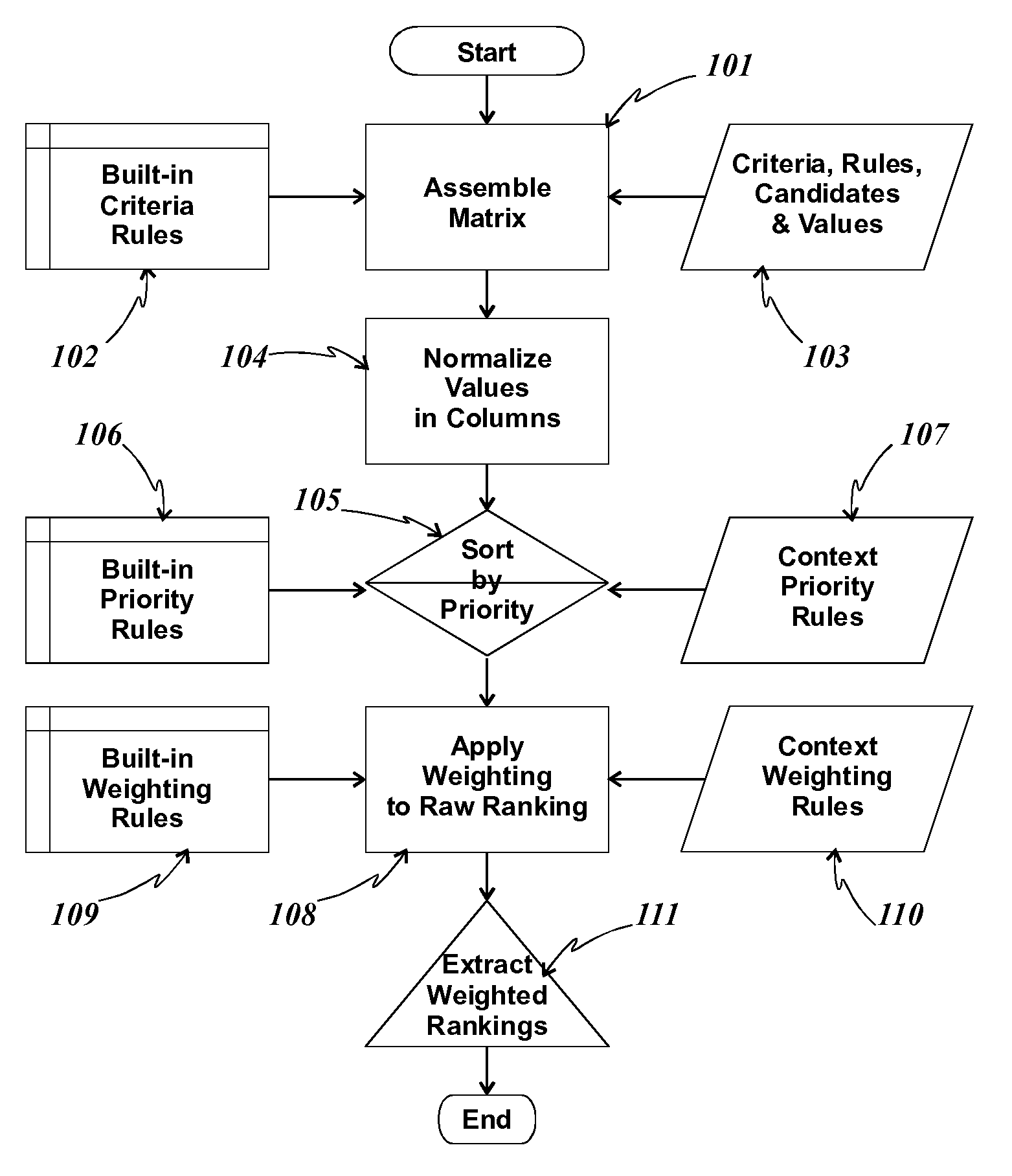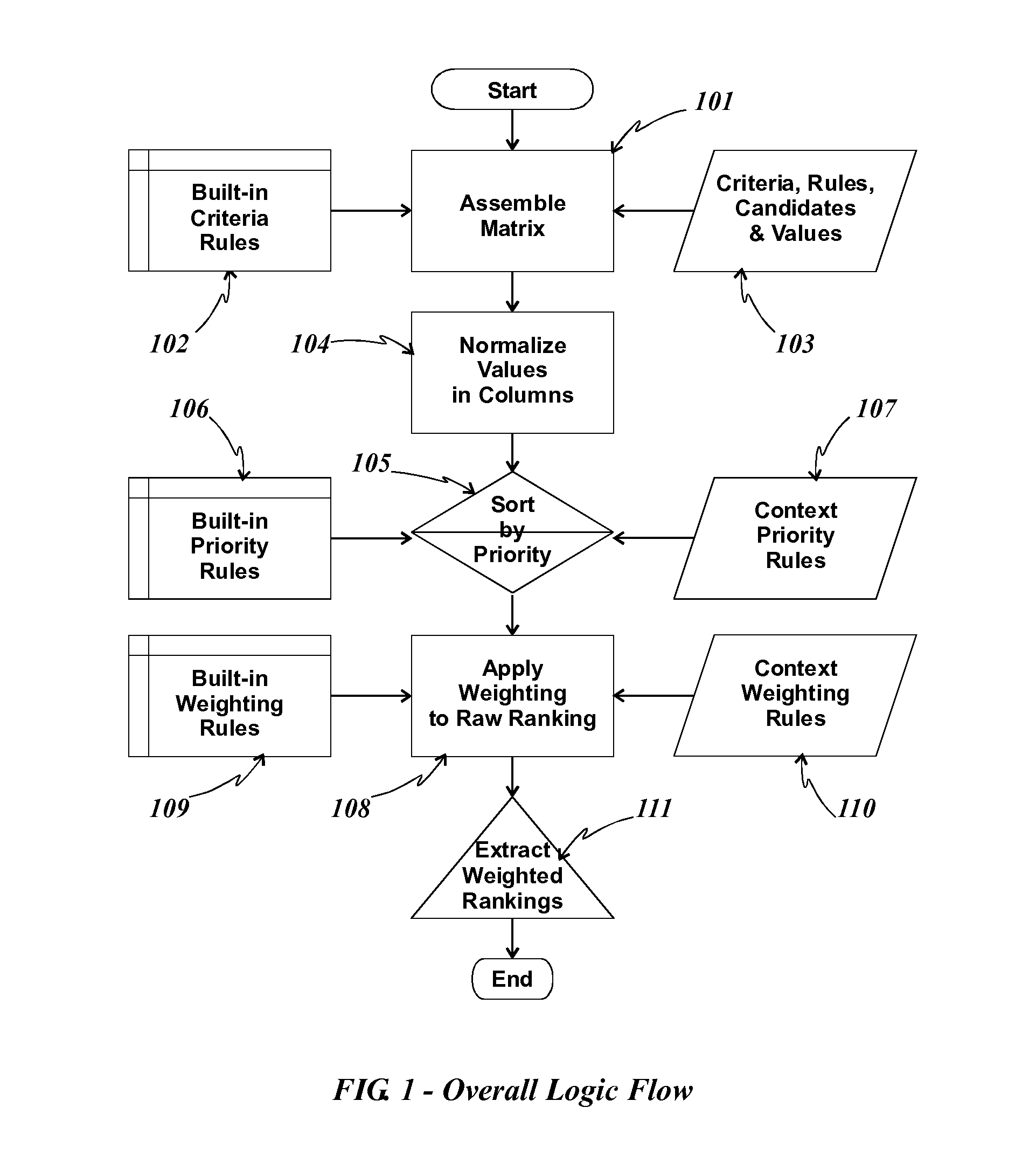Method for making optimal selections based on multiple objective and subjective criteria
a selection method and objective and subjective criteria technology, applied in the field of decision and selection support logic, can solve the problems of premature elimination of some candidates, and achieve the effect of avoiding premature elimination of factors
- Summary
- Abstract
- Description
- Claims
- Application Information
AI Technical Summary
Benefits of technology
Problems solved by technology
Method used
Image
Examples
Embodiment Construction
[0020]The method of the present invention first accepts a matched set of candidates and criteria, such that for each criterion, there is a corresponding set of candidates. Each candidate is uniquely identifiable and, for each criterion there is a value. Values have types in that, for each candidate, the value corresponding to a criterion is of the type associated with that criterion. Types need not be numeric; they need only be comparable according to a defined rule associated with that type. Values in the input are typically unordered, but can be pre-ordered. Values can be inherently objective and measurable, or can be subjective. Values need only be orderable according to an ordering rule associated with the values' type. For example, a criterion for a decision to purchase a television set might be something like “Brand preference”. This is likely subjective, but presumably the interested party has an ordered list of brands, or even a single favorite brand. In the preferred embodi...
PUM
 Login to View More
Login to View More Abstract
Description
Claims
Application Information
 Login to View More
Login to View More - R&D
- Intellectual Property
- Life Sciences
- Materials
- Tech Scout
- Unparalleled Data Quality
- Higher Quality Content
- 60% Fewer Hallucinations
Browse by: Latest US Patents, China's latest patents, Technical Efficacy Thesaurus, Application Domain, Technology Topic, Popular Technical Reports.
© 2025 PatSnap. All rights reserved.Legal|Privacy policy|Modern Slavery Act Transparency Statement|Sitemap|About US| Contact US: help@patsnap.com



